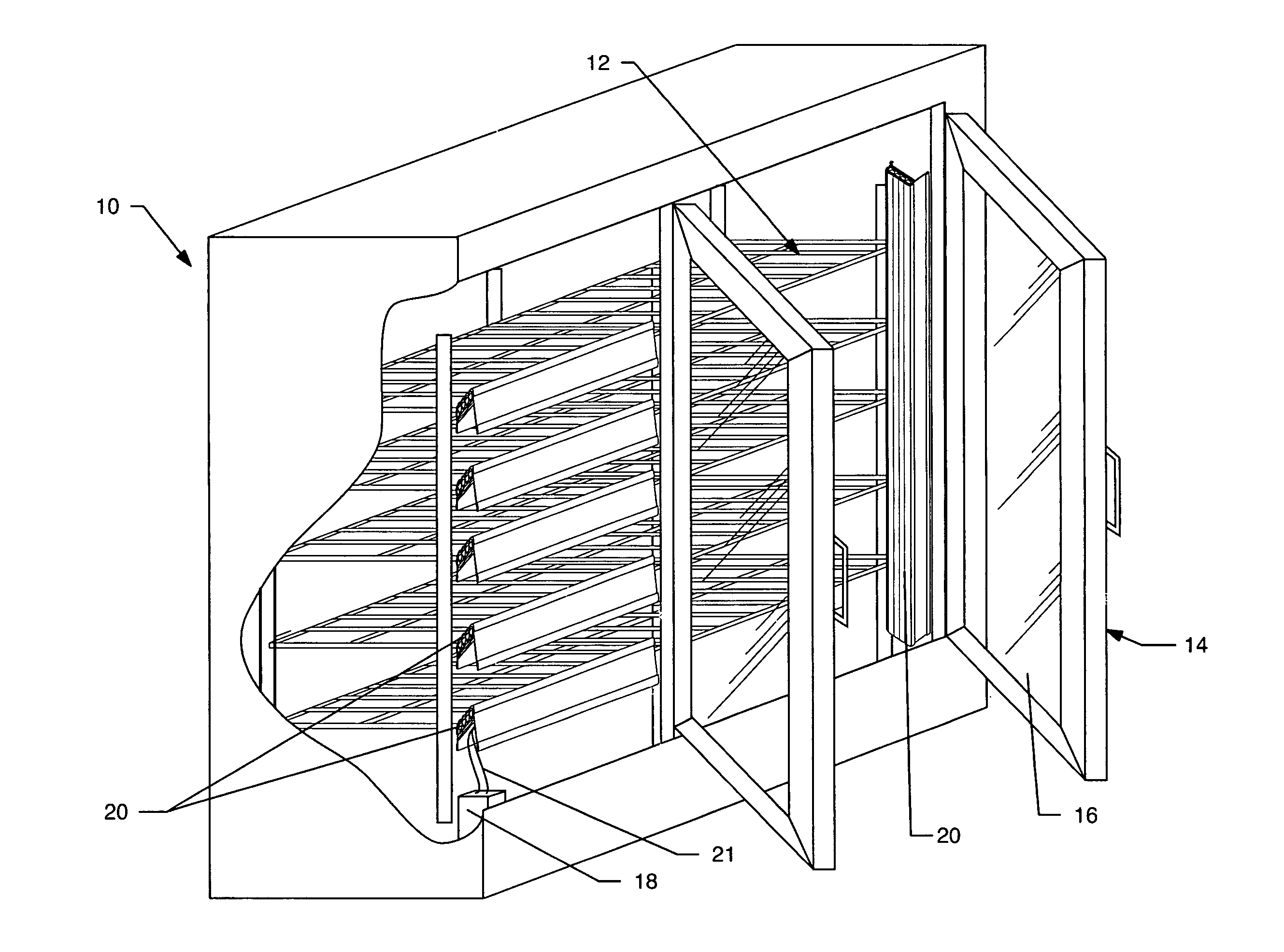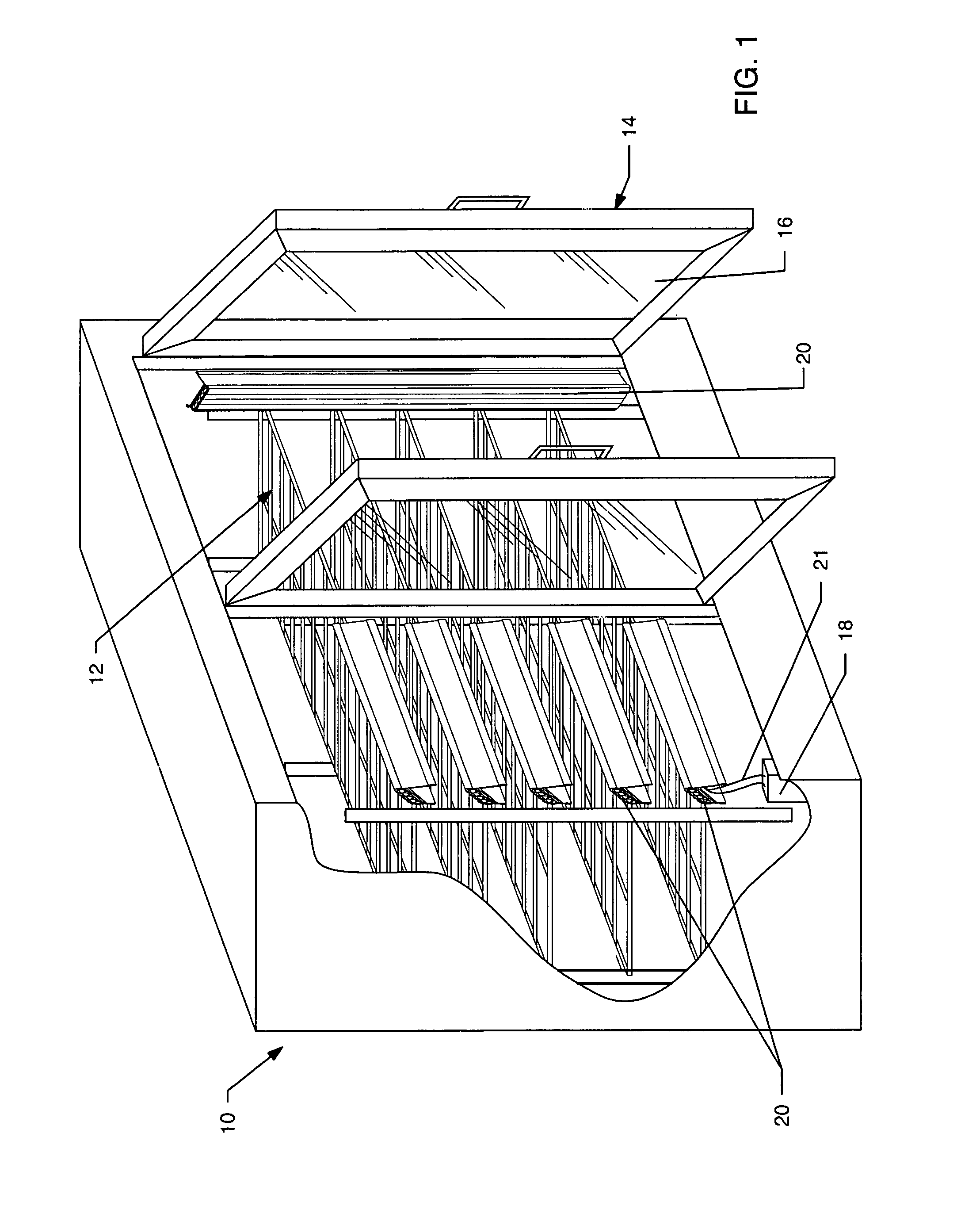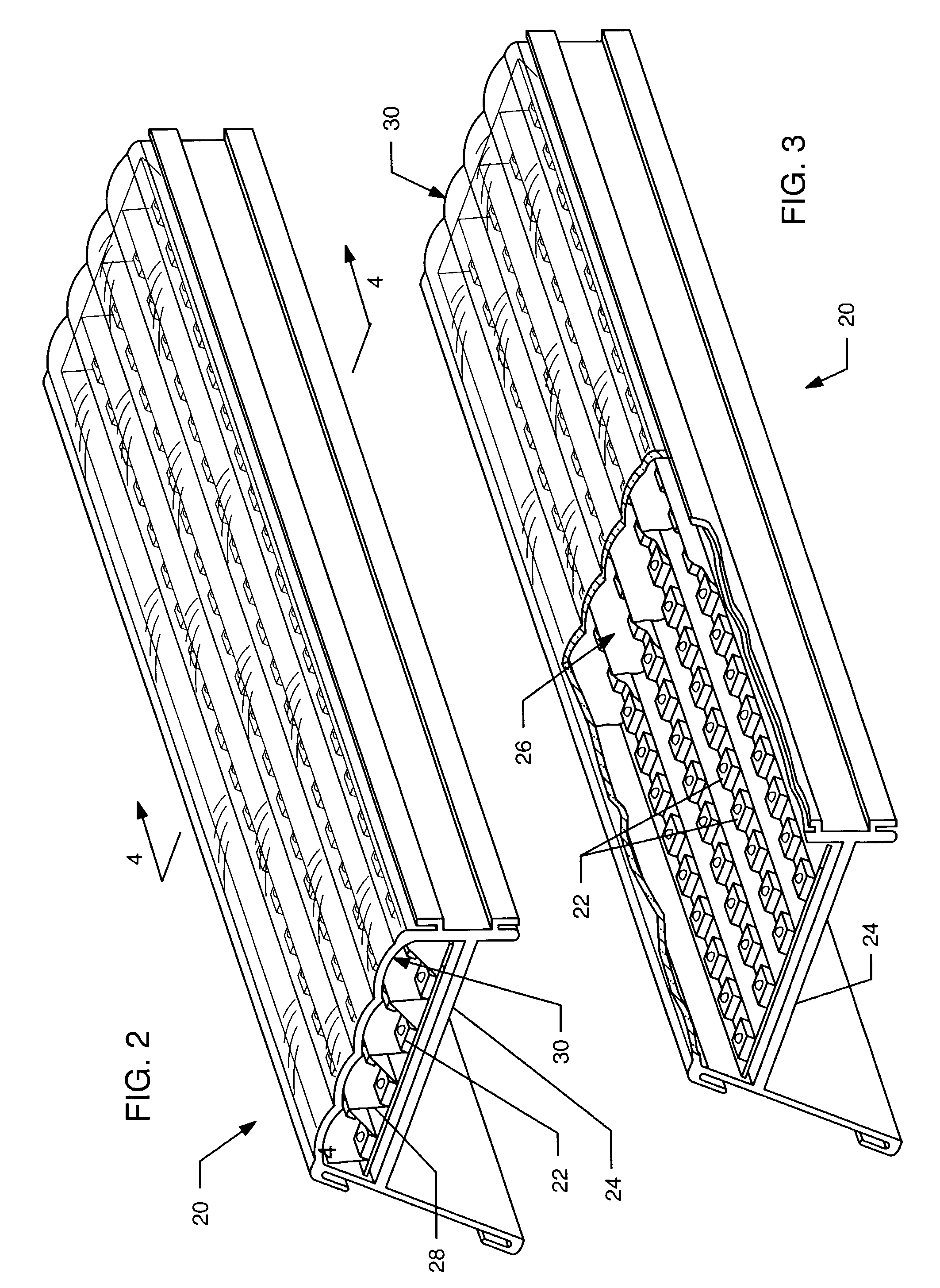Low temperature LED lighting system
a technology of led lighting and low temperature, which is applied in the field of low temperature led lighting systems, can solve the problems of inefficient colder temperature, difficult fire, and inability to start flourescent tubes in sub-zero temperatures, and achieves the effects of low cost, low energy consumption, and low cos
- Summary
- Abstract
- Description
- Claims
- Application Information
AI Technical Summary
Benefits of technology
Problems solved by technology
Method used
Image
Examples
Embodiment Construction
[0032]As shown in the drawings for purposes of illustration, the present invention is concerned with a lighting system used in low temperature applications, such as refrigeration units, freezer units the like.
[0033]With reference now to FIG. 1, an exemplary refrigeration unit 10 is illustrated which is commonly used in supermarkets and the like. Although such a refrigeration unit 10 is illustrated for exemplary purposes, it should be understood by those skilled in art that the present invention can be utilized in any number of different low temperature applications in different settings. However, the present invention is particularly adapted for use in such refrigeration units 10. Such refrigeration units 10 include a plurality of shelves 12 in an interior cavity thereof for storing refrigerated or frozen product. Doors 14 are provided at the front of the refrigeration unit 10 to allow access to the product. Typically, the doors 14 include glass or clear panes 16 to enable viewing o...
PUM
 Login to View More
Login to View More Abstract
Description
Claims
Application Information
 Login to View More
Login to View More - R&D
- Intellectual Property
- Life Sciences
- Materials
- Tech Scout
- Unparalleled Data Quality
- Higher Quality Content
- 60% Fewer Hallucinations
Browse by: Latest US Patents, China's latest patents, Technical Efficacy Thesaurus, Application Domain, Technology Topic, Popular Technical Reports.
© 2025 PatSnap. All rights reserved.Legal|Privacy policy|Modern Slavery Act Transparency Statement|Sitemap|About US| Contact US: help@patsnap.com



